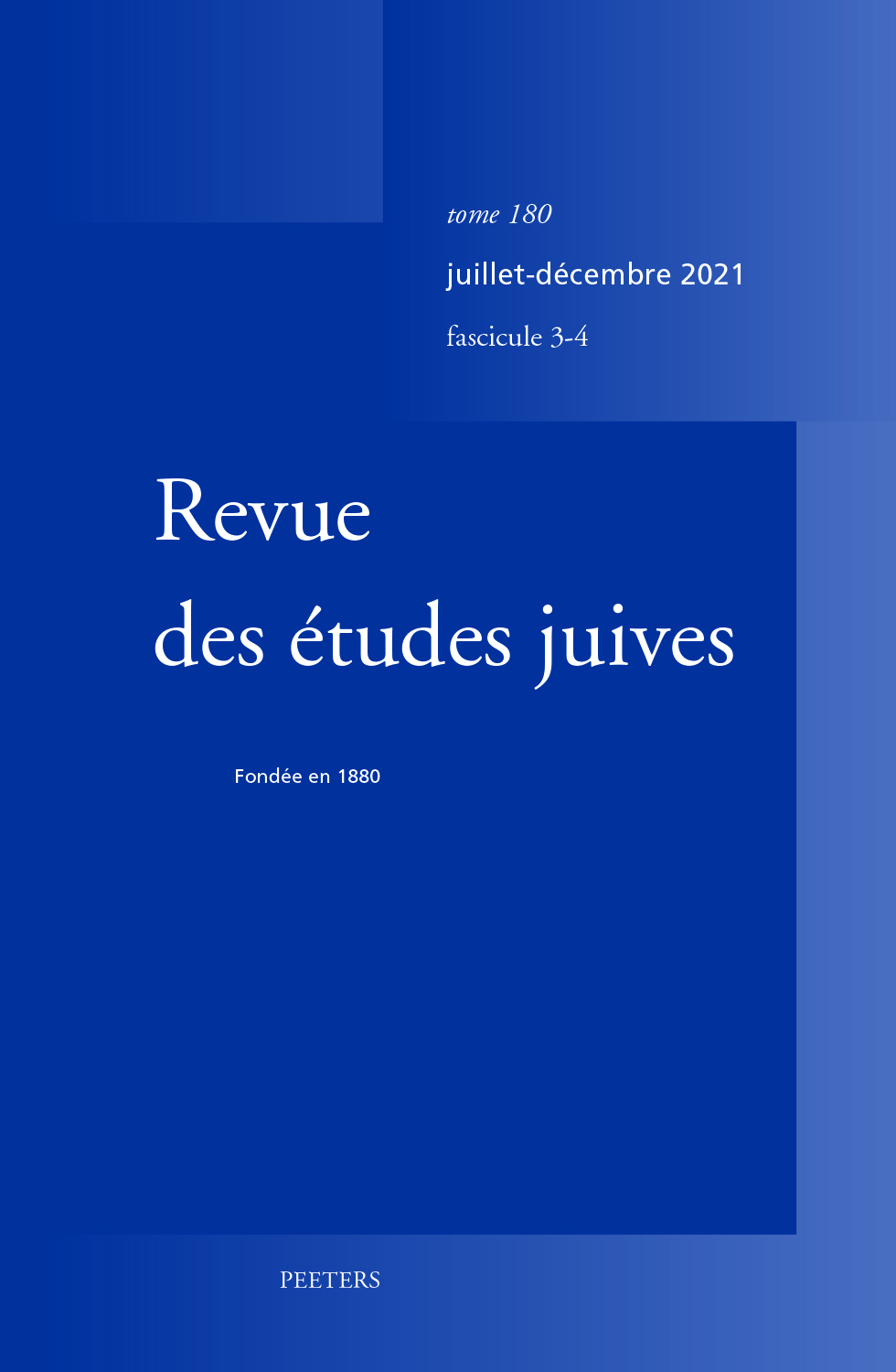 previous article in this issue previous article in this issue | next article in this issue  |

Preview first page |
Document Details : Title: Les apocalypses akkadiennes et bibliques Subtitle: Quelques points communs Author(s): BODI, Daniel Journal: Revue des Études Juives Volume: 169 Issue: 1-2 Date: janvier-juin 2010 Pages: 13-36 DOI: 10.2143/REJ.169.1.2047037 Abstract : Cette contribution mentionnera d’abord quelques définitions de l’apocalyptique biblique proposées par différents auteurs, puis les opinions des assyriologues Hallo, Biggs, Grayson, Lambert et Borger concernant un corpus de textes akkadiens appelés «apocalypses» ou «prophéties» akkadiennes. Elle mettra en valeur la nécessité de reprendre ce dossier considéré comme difficile en raison du caractère souvent fragmentaire de ces textes. Néanmoins, la recherche a réalisé quelques progrès depuis les premières publications et les biblistes trouveront matière à entreprendre un travail comparatiste entre les deux corpus. En dernier lieu, quelques points communs apparaîtront entre les textes apocalyptiques akkadiens et bibliques autour du thème de la restauration: 1) Ez 47, 1-12; Jl 4, 18 et Za 14, 8 ou le motif de la prospérité retrouvée grâce aux fleuves fertilisants; 2) le rêve de Nabuchodonosor en Dn 2: la statue composite et la périodisation schématique du déroulement de l’histoire du monde (la thèse de G. Hasel); 3) l’alternance schématique de «bons» et de «mauvais» rois ou règnes dans les apocalypses akkadiennes. Pour notre sujet sur l’apocalyptique, il est possible d’opérer un rapprochement entre la carrière de Nabuchodonosor dans l’apocalypse de Dn 4 et celle mentionnée dans la prière de Nabonide: le roi retrouve la raison et la santé après sa conversion au vrai dieu et au vrai culte. Le récit se déroule selon le schéma mauvais début, mais bonne fin. This contribution starts with several definitions of biblical apocalyptic suggested by different authors. It reviews the opinion of assyriologists like Hallo, Biggs, Grayson, Lambert and Borger concerning a corpus of Akkadian texts called Akkadian «apocalypses» or «prophecies». Although these texts are considered difficult on account of their fragmentary nature, scientific research has made some progress since their first publication allowing biblical scholars to make fruitful comparisons. The final part of the article points out some common features to both domains concerning the theme of restoration: 1) Ezekiel 47, 1-12; Joel 4, 18 and Zachariah 14, 8 or the motif of regained prosperity owing to fertilizing waters; Nabuchadnezzar’s dream of the composite statue in Daniel 2 and the succession of epochs in the world history (G. Hasel’s thesis); 3) the schematic alternation between the good and the bad reigns in Akkadian apocalypses and Nabuchadnezzar’s career according to Daniel 4 and the Prayer of Nabonidus: the king recovers his health and reason after his conversion to the true god and worship. The reign follows the pattern of a bad beginning and a good conclusion. |
|


